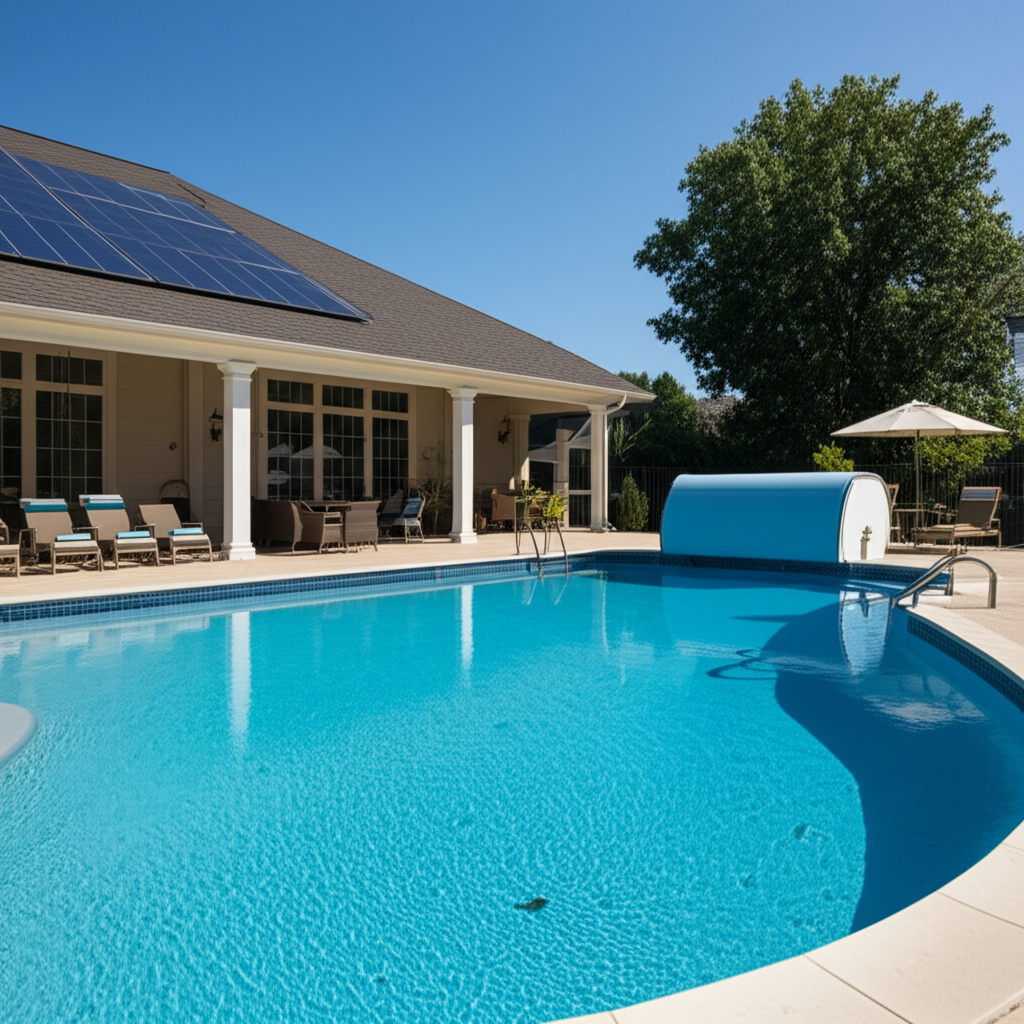- Understanding Your Pool's Energy Footprint
- Maximizing Pool Energy Efficiency with Smart Pumps
- Achieving Pool Energy Efficiency Through Smart Heating
- Economical Lighting and Automation
- Regular Maintenance for Sustained Savings
- The Bigger Picture: Long-Term Benefits
Pool Energy Efficiency: For many homeowners, a swimming pool is a source of joy, relaxation, and fantastic memories. However, it can also be a significant hidden drain on household energy consumption. From powerful pumps circulating water to heaters maintaining ideal temperatures and lights illuminating evening dips, pools demand a surprising amount of power. The good news is that achieving substantial energy savings and a greener footprint is entirely within reach with proven strategies and smart investments. Understanding where your pool uses the most energy and implementing targeted solutions can drastically cut your utility bills while maintaining, or even enhancing, your aquatic experience.
Understanding Your Pool’s Energy Footprint
Before diving into solutions, it’s crucial to identify the primary energy consumers in your pool system. Typically, the pool pump is the biggest culprit, followed by the heating system. Lighting and other accessories also contribute, albeit to a lesser extent. By focusing your efforts on these major players, you can realize the most significant impact on your energy consumption and, consequently, your wallet.
Maximizing Pool Energy Efficiency with Smart Pumps
The heart of any pool is its circulation system, driven by the pool pump. Traditional single-speed pumps run at full power whenever they’re on, often more than necessary.
Variable-Speed Pool Pumps (VSP): This is arguably the most impactful upgrade for achieving Pool Energy Efficiency. Unlike single-speed pumps, VSPs can operate at various speeds, allowing them to run at lower, more energy-efficient settings for most of the day. They use sophisticated motors that can reduce energy consumption by up to 90% compared to older models, paying for themselves in energy savings within just a few years. For instance, reducing a pump’s speed by half can reduce its energy consumption by 85%.
Proper Sizing: Ensure your pump is correctly sized for your pool. An oversized pump wastes energy, while an undersized one struggles to maintain water quality. A pool professional can help determine the ideal pump size based on your pool’s volume and plumbing.
Optimized Run Times: With a VSP, you can run your pump for longer durations at lower speeds, which is more effective for filtration and uses less energy than shorter bursts at high speeds. Aim to turn over your pool’s water at least once every 24 hours.
Achieving Pool Energy Efficiency Through Smart Heating
Heating a pool can be incredibly energy-intensive, especially in cooler climates or during off-season use. Several options exist to reduce heating costs.
Solar Pool Heaters: These systems harness the sun’s free energy to warm your pool water. They are highly efficient, environmentally friendly, and, after the initial installation, cost very little to operate. They work by circulating pool water through special solar collectors, warming it, and returning it to the pool.
Pool Heat Pumps: Unlike traditional gas heaters, heat pumps don’t generate heat directly. Instead, they extract heat from the ambient air, intensify it, and transfer it to the pool water. While they require electricity to run, they are much more energy-efficient than gas heaters, offering up to 5-7 times the energy output for the electricity consumed.
Pool Covers: This is one of the simplest, yet most effective, ways to boost Pool Energy Efficiency. A good quality pool cover (solar, automatic, or winter) significantly reduces heat loss through evaporation, which accounts for 70-80% of a pool’s heat loss. It also minimizes chemical evaporation and keeps debris out, reducing pump run times for filtration. A solar cover, in particular, can also absorb solar energy, helping to actively heat the water.
Economical Lighting and Automation
While pumps and heaters consume the bulk of the energy, smaller upgrades can contribute to overall savings.
LED Lighting: Swap out traditional incandescent or halogen pool lights for energy-efficient LED alternatives. LEDs consume significantly less power, last much longer, and often provide better customizable lighting options.
Smart Automation Systems: These systems allow you to control your pool equipment (pump, heater, lights) from a smartphone or tablet. They can be programmed to run equipment only when needed, optimize filtration cycles, and even respond to weather conditions, ensuring everything operates with maximum efficiency.
Regular Maintenance for Sustained Savings
Consistent maintenance is not just about water quality; it’s a vital component of Pool Energy Efficiency.
Clean Filters: A dirty filter forces your pump to work harder, consuming more energy. Regularly clean or backwash your filter according to manufacturer recommendations.
Balanced Water Chemistry: Proper pH, alkalinity, and sanitizer levels keep your pool water clean and clear, reducing the need for excessive filtration or harsh chemical treatments that can strain equipment.
Clear Skimmer Baskets and Pump Strainers: Blockages here restrict water flow, making the pump work harder.
The Bigger Picture: Long-Term Benefits
Investing in Pool Energy Efficiency offers numerous advantages beyond immediate utility bill reductions:
Environmental Impact: Reduced energy consumption means a smaller carbon footprint, contributing to a healthier planet.
Extended Equipment Lifespan: When equipment runs more efficiently and isn’t overstressed, it tends to last longer, delaying costly replacements.
Increased Home Value: An energy-efficient pool can be an attractive selling point for potential homebuyers, showcasing a commitment to modern, sustainable living.
* Enhanced Comfort and Convenience: Modern energy-efficient systems often come with advanced features, quieter operation, and smart controls, making pool ownership even more enjoyable.
In conclusion, transforming your pool into an energy-efficient oasis is a smart move for your budget and the environment. By strategically upgrading to variable-speed pumps, utilizing smart heating solutions like solar or heat pumps, embracing simple yet effective tools like pool covers, and maintaining your system diligently, you can enjoy all the benefits of your pool with significantly lower operating costs. These proven strategies offer the best savings, ensuring your pool remains a source of pleasure, not a drain on your finances or the planet.




